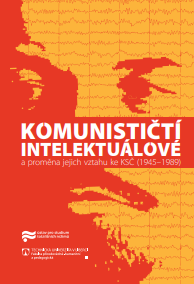Národní divadlo jako symbolické centrum paměti
National Theater as a symbolic center of national memory
Author(s): Kamil Činátl
Subject(s): Theatre, Dance, Performing Arts, Architecture, Political history, Social history, Recent History (1900 till today), Interwar Period (1920 - 1939), WW II and following years (1940 - 1949), Post-War period (1950 - 1989), History of Communism, Politics of History/Memory
Published by: Ústav pro studium totalitních režimů
Keywords: Czechoslovakia; 20th century; communist party; national theater; national memory; architecture; Aleida Assmann;
Summary/Abstract: The study uses methodology “cultural memory studies” to feature the National Theater as a place of memory. It focuses on the building as a symbol and attempts to describe the way, in which the symbolic architecture represents the past and enters the memory praxis of the nation (decoration of the theater, canonical repertoire, festivities, collections and so-called theater trains as actions of national participation). The author adds a dynamic extent of remembrance to a traditional approach – place of memory as a depository of representations of history. He contemplates the National Theater as an “empty place” – a framework of a specific social and cultural context to deliver substance of the past. The study analyses the process of the National Theater constitution as a place of memory – especially in the connection with the 1881 fire. This “national tragedy” symbolized one of the most powerful experiences of the modern Czech nation, that as a strong shared affection reflected itself in the process of constitution of the national identity. In this instance the study utilizes theme of trauma used by Aleida Assmann in the frame of the memory studies. The study uses a few cases to demonstrate memory praxis closely linked to a symbolic space of the National Theater (production of the Čapek’s theater play the White Disease (Bílá nemoc) in 1937, role of the theater during political changes in 1989).
Book: Komunističtí intelektuálové a proměna jejich vztahu ke KSČ (1945-1989)
- Page Range: 228-233
- Page Count: 6
- Publication Year: 2013
- Language: Czech
- Content File-PDF

